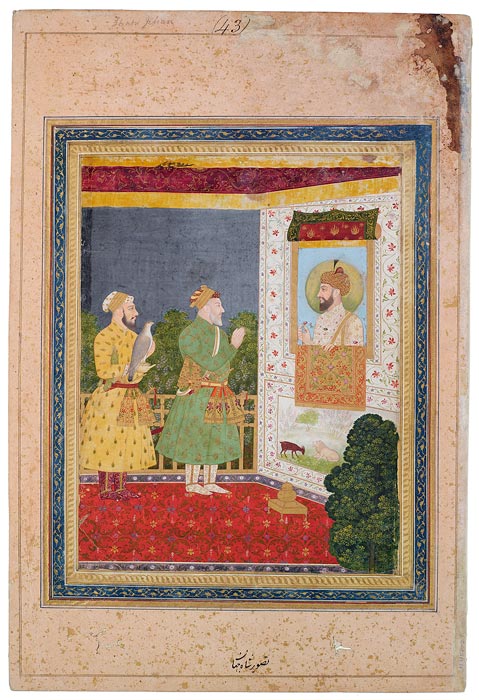
The Mughal rulers adopted the Hindu custom of appearing to their subjects in a special audience window called the jharoka. In this rare version of the theme, however, it is not the reigning monarch who appears in the window but his ancestor. In a similar miniature in the Victoria and Albert Museum, London, the man before the window is identified as Bahādur Shāh (r. 1707–12), son and successor of Aurangzeb (r. 1658–1707), likely the figure depicted in the window. The dynastic link goes even further back, as the latter's turban is of central Asian origin and thus associated with his primogenitor, Bābur, founder of the dynasty. The goat and reclining lion depicted below the window suggest a reign of peace and justice as well as the enduring majesty of Mughal rule from Bābur to Bahādur Shāh.
The Read Mughal Album
Pierpont Morgan purchased the Read Mughal album, along with a Persian album, from Sir Charles Hercules Read, Keeper of British and Medieval Antiquities at the British Museum, in 1911. The Morgan purchase consisted of thirty folios (including both Indian miniatures and the Mughal portraits presented here), but Read owned at least forty-eight others, now widely dispersed. The leaves were probably once bound in several lacquered bindings. The identity of their compiler has not been established, but many borders date from the eighteenth and nineteenth centuries. The Mughal emperors of India commissioned biographies and were frequently portrayed by artists. Here the paintings are presented in the order of the emperor's reigns rather than the dates of the miniatures, starting with Bābur (r. 1526–30), the Muslim founder of the dynasty, and ending with Shāh Jahān (r. 1628–58), builder of the Taj Mahal.
